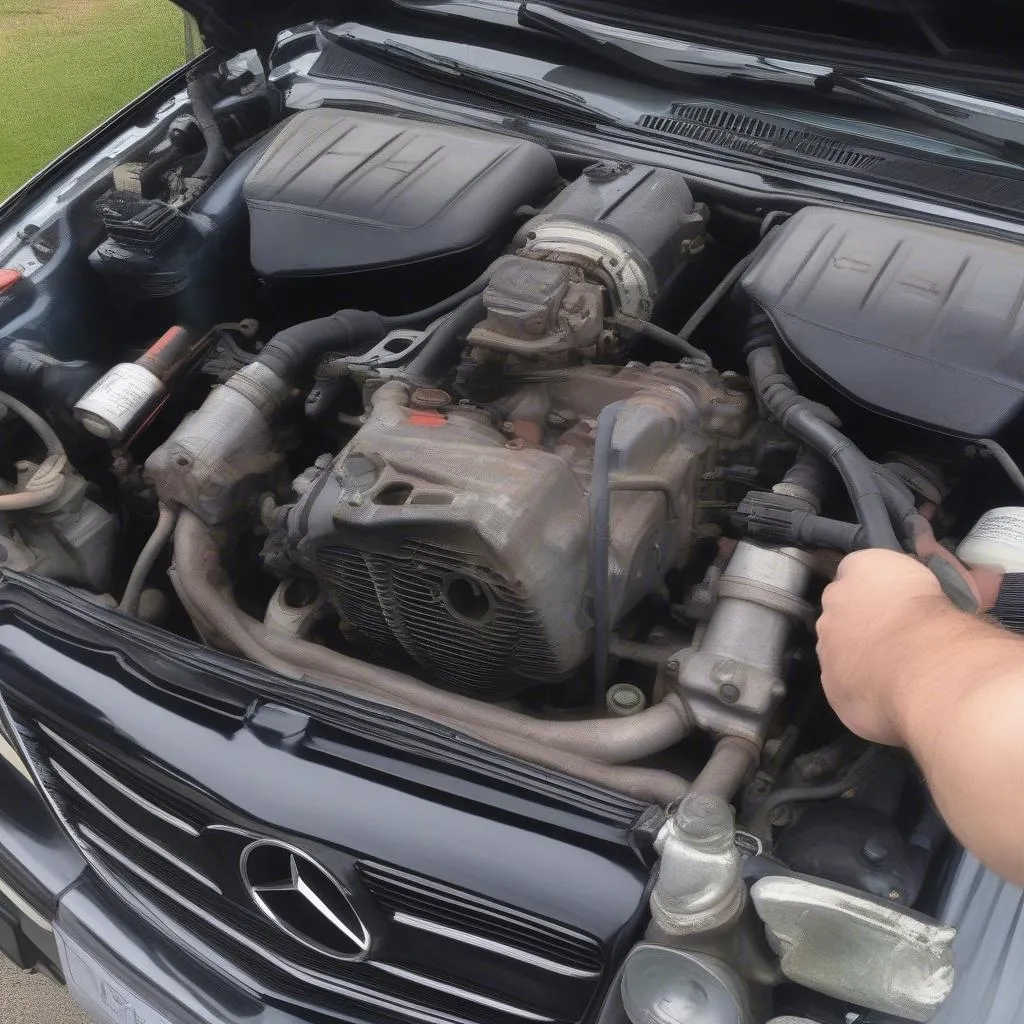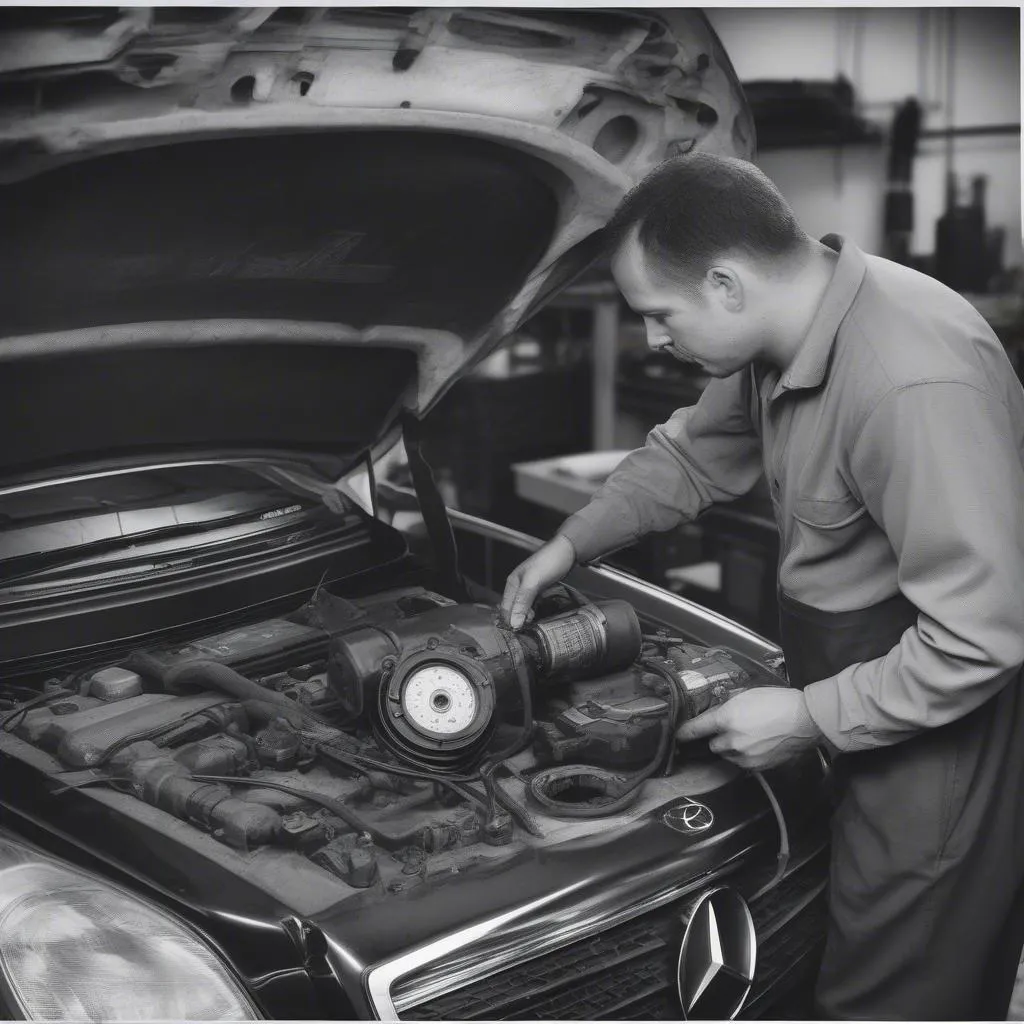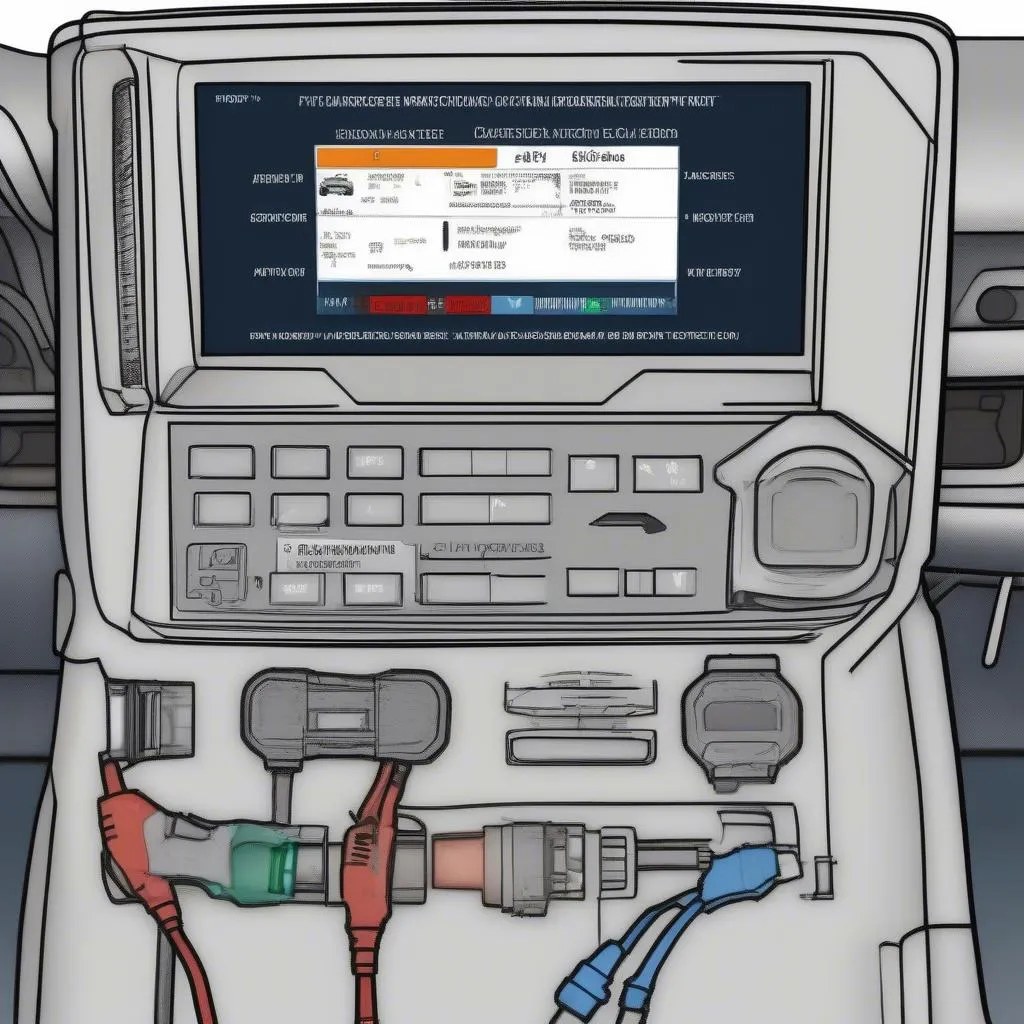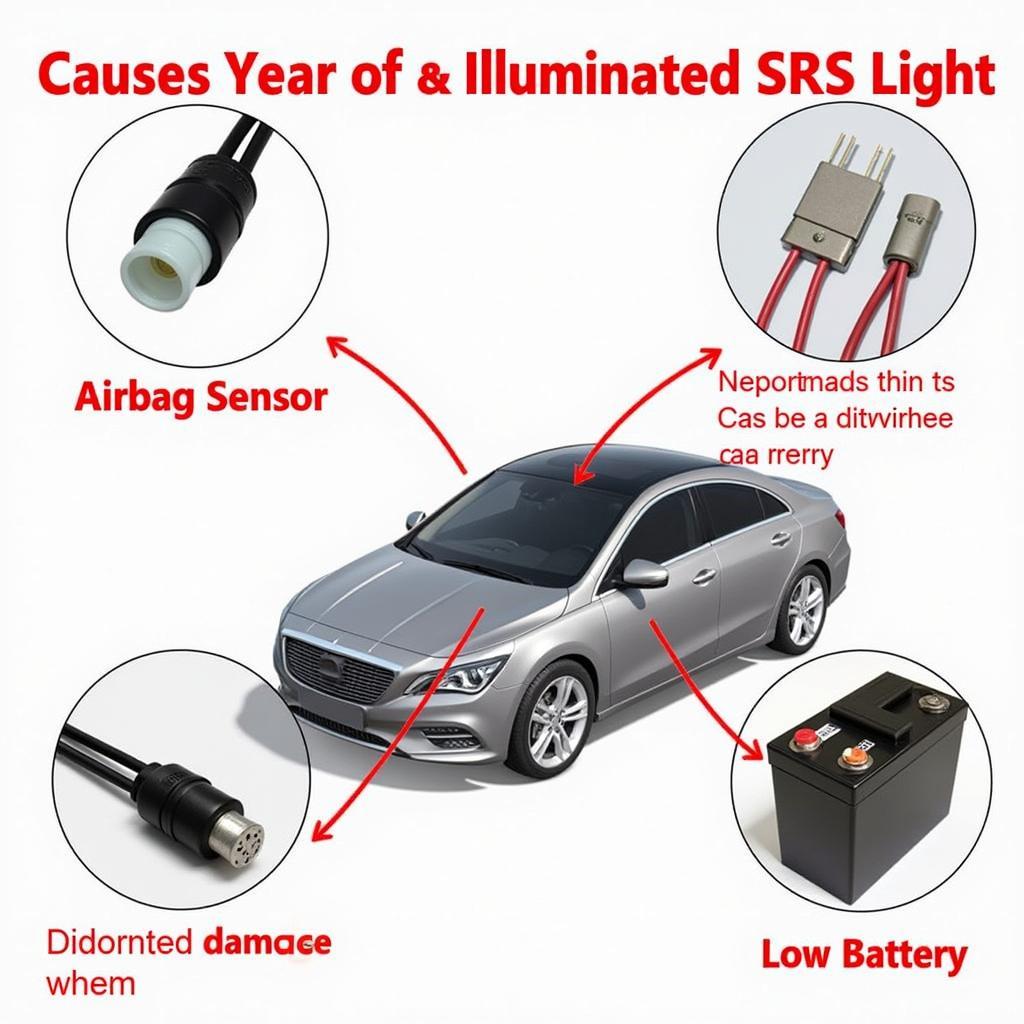If you’re experiencing a frozen Bendix in your 1980 Mercedes Benz, you’re not alone. This is a common problem in older vehicles, often caused by wear and tear, corrosion, or lack of lubrication. Fortunately, with a bit of know-how, it can be diagnosed and fixed. This guide will walk you through the causes, symptoms, and solutions for a frozen Bendix in your classic Mercedes.
Understanding the Bendix and Its Role
Before we dive into the fix, let’s clarify what the Bendix is and why it’s crucial for your car’s starting system. The Bendix is a small but mighty component within your starter motor. When you turn your key, the Bendix engages with the teeth of your car’s flywheel, cranking the engine to life.
Common Causes of a Frozen Bendix in a 1980 Mercedes Benz
Several factors can lead to a frozen Bendix in a 1980 Mercedes Benz:
- Corrosion: Over time, exposure to moisture and road salt can cause rust and corrosion on the Bendix drive, hindering its movement.
- Lack of Lubrication: The Bendix relies on lubrication for smooth operation. If the lubricant dries out or becomes contaminated, the Bendix can seize.
- Worn Gear Teeth: Wear and tear on the Bendix gear teeth or the flywheel teeth can prevent proper engagement, leading to a frozen feeling.
- Electrical Issues: While less common, problems with the starter solenoid or wiring can also mimic the symptoms of a frozen Bendix.
Recognizing the Symptoms
Identifying a frozen Bendix early can save you from a no-start situation. Here’s what to look out for:
- Grinding Noise When Starting: A loud grinding noise when you try to start the engine is a telltale sign of a problematic Bendix.
- Clicking Sound but No Crank: If you hear a clicking sound when turning the key but the engine doesn’t crank, the Bendix may be stuck.
- Intermittent Starting Issues: You might experience situations where the car starts fine sometimes but struggles at other times, indicating a sticking Bendix.
Gathering the Tools for the Fix
Before you begin, ensure you have the following tools:
- Socket set and wrenches: To remove the starter motor.
- Penetrating oil: To loosen the frozen Bendix.
- Wire brush and cleaning cloth: To remove rust and debris.
- White lithium grease: To lubricate the Bendix.
Step-by-Step Guide to Fixing a Frozen Bendix
- Safety First: Disconnect the negative battery cable before starting any work on your car’s electrical system.
- Locate and Remove the Starter Motor: The starter motor is usually located on the engine block, near the transmission. Refer to your car’s service manual for its exact location.
- Inspect the Bendix: Once the starter is removed, visually inspect the Bendix drive for signs of rust, damage, or lack of lubrication.
- Free the Frozen Bendix: If the Bendix is stuck, apply a generous amount of penetrating oil to the drive mechanism. Allow it to soak in for a few minutes, then try manually moving the Bendix gear back and forth to free it.
- Clean and Lubricate: Use a wire brush and cleaning cloth to remove any rust or debris from the Bendix drive and the starter housing. Once clean, apply white lithium grease to the Bendix gear and the drive mechanism to ensure smooth operation.
- Reassemble and Test: Reinstall the starter motor, reconnect the battery, and try starting your Mercedes. If the repair was successful, the grinding noise or starting issues should be gone.
 Engine Bay View
Engine Bay View
FAQs about Frozen Bendix in 1980 Mercedes Benz
Can I drive with a frozen Bendix?
It’s highly discouraged. Driving with a frozen Bendix can cause further damage to your starter motor and flywheel, leading to costlier repairs down the line.
Is replacing the starter motor the only solution?
Not necessarily. If the problem is caught early, cleaning and lubricating the Bendix might be sufficient. However, if there’s significant wear or damage, replacement might be necessary.
What if I’ve tried everything and the problem persists?
If the issue persists, it’s advisable to consult with a qualified mechanic or an auto electrician to diagnose and address any underlying electrical issues.
 Car Diagnosis
Car Diagnosis
Utilizing Diagnostic Tools
For those who are comfortable using car diagnostic tools, products like those offered by CARDIAGTECH can provide invaluable insights into the health of your car’s electrical system. These tools can help pinpoint issues with the starter motor, solenoid, or wiring that might be contributing to the symptoms of a frozen Bendix.
Conclusion
A frozen Bendix can be a frustrating issue, but by understanding its causes and following the outlined steps, you can often resolve the problem yourself. Remember, regular maintenance, including cleaning and lubrication of vital components like the Bendix, can go a long way in preventing future issues and keeping your classic Mercedes running smoothly.


